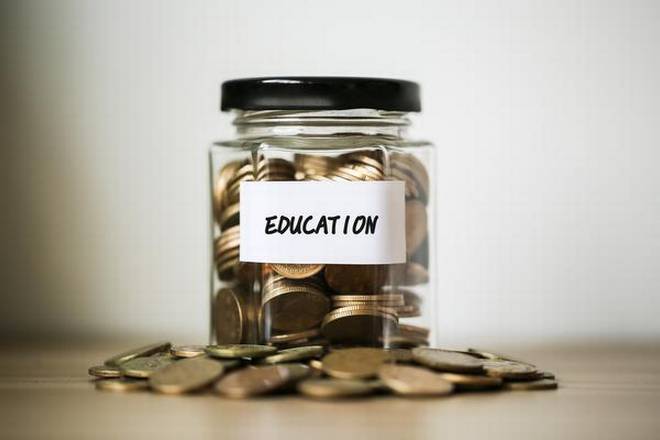The major limitation of the budget is that it failed to allocate 6% of GDP to education, reiterated by the Kothari Commission decades ago

The budget for education for 2023-24 is Rs 1.13-lakh crore, with the highest-ever allocation received. The new budget raised the projected expenditure on school and higher education by around 8.3% compared to the RE 2022-2023 and 13% compared to the last budgeted figures. The high allocations were supported with a slew of planned actions to link the emerging gaps in education for the ensuing year.
The total allocation for education in the budget 2022-23 was Rs 1.04 lakh crore crossing the Rs 1 lakh crore mark for the first time. However, the spending was lower than expected, leading to the revised estimate for 2022-23 being cut to Rs 99,881 crore. Out of the total allocation last year, the funding for school education and literacy was Rs 63,449 crore while Rs 40,810 crore was for higher education.
Regards the new allocations for school education in budget 2023-24, there has been an overall increase of Rs 9,752 crore with a 16.5% hike, while for higher education, an amount of Rs 44,095 crore has been made with an 8% rise compared to the last budget.
With 50% of India’s population below 25 years and the government aspiring to have 25% of the global workforce led by Indians until 2047, the expectations were that the incoming budget would emphasise the development of the new-age competencies among our students. A substantial budget allocation to train education professionals using Artificial Intelligence (AI), Virtual Reality and Augmented Reality for education was hoped for.
The budget was expected to emphasise the digital skilling of teachers and students, quality education as per internationalised standards, and focus on making technology-driven education more accessible. It was also hoped that the budget would set up a digital library ecosystem and emphasise building students’ EQ values and soft skills. Further, it was desired that an increase in total funding would accelerate the implementation of the NEP 2020 in terms of access, equity, quality, affordability, and accountability in education.
As per expectations, the education budget focuses on job creation and youth upliftment in this economy and is expected to encourage students from diverse backgrounds to learn digital skills comprehensively. The funding for setting up three centres of excellence in AI in top educational institutions in partnership with leading industry players to enable 'Make AI for India' and 'Make AI work for India' will encourage youth from diverse backgrounds to learn digital skills.
The budget acknowledged the need for adequate teacher training and building resilient mechanisms in education delivery. The proposal about setting up 157 new nursing colleges, training 38,000 teachers for the Eklavya schools serving 3.5 lakh tribal students, and strengthening the PM Shri schools is appreciable. Additionally, District Institutes of Education and Training are to be developed as vibrant centres of excellence.
Further, the budget-increased emphasis on developing e-content in all Indian languages and launching a ‘Digital University’. It was announced that the 'National Digital Library for Children and Adolescents' would facilitate the creation of books and learning materials from all genres. Another announcement is about encouraging students to learn English and regional languages in partnership with NGOs to improve their understanding of culture and regional concepts.
It was said that the States would be encouraged to set up physical libraries at panchayat and ward levels and provide infrastructure for accessing the National Digital Library resources. To ‘build a culture of reading and to make up for pandemic-time learning loss’, it was said that the National Book Trust and the Children’s Book Trust would be encouraged to provide non-curricular titles in regional languages and English to these physical libraries. The most unfortunate part, however, is about no fund allocation for the library project in the 2023-24 budget. Neither was a separate allocation for the National Digital University project in 2022.
Despite all good intentions and actions, the budget for education has some reasons to disappoint as it tightened the purse in the wrong places. The taxes on educational programmes, at a higher rate of 18%, was expected to be eased to reduce the economic burden of learners seeking a better future through skilling and upskilling programmes. Further, the government should have taken advantage of an opportunity to allow a higher income tax deduction for contributions towards payment of tuition and hostel fees. The Samagra Shiksha scheme, expected to be the primary driver behind reversing learning losses, registered a small hike of 0.18%.
The major limitation of the budget is that it once again failed to allocate 6% of GDP to education, reiterated by the Kothari Commission decades ago and the recent National Education Policy (NEP) 2020.
The NEP talks of establishing large multidisciplinary HEIs in or near every district by 2030, which entailed an increased salary budget for faculty and staff and enhanced infrastructure to accommodate more students in the existing campuses. Similarly, a sound provision was desired since the four-year undergraduate programme has been implemented in all higher education institutions from the upcoming 2023-24.
Currently, the spending on education has remained stalemated at 2.9% for the past four years, which is way less than the requirements. Moreover, the budgetary allocation for education in the last fiscal has dropped to 9.5% of the total expenditure from 10.4%. In comparison, the expenditure on education as a percentage of social services declined from 42.5% in 2019-20 to 35.5% in 2022-23.
Overall, the education budget for 2023-24 brings many welcome changes. The most significant negative is that the government has spent considerably less than what has been budgeted for education over the last many budgets. Though the positive news is about the record highest for this year for education, it must be ensured that the government spends the allocated amount.